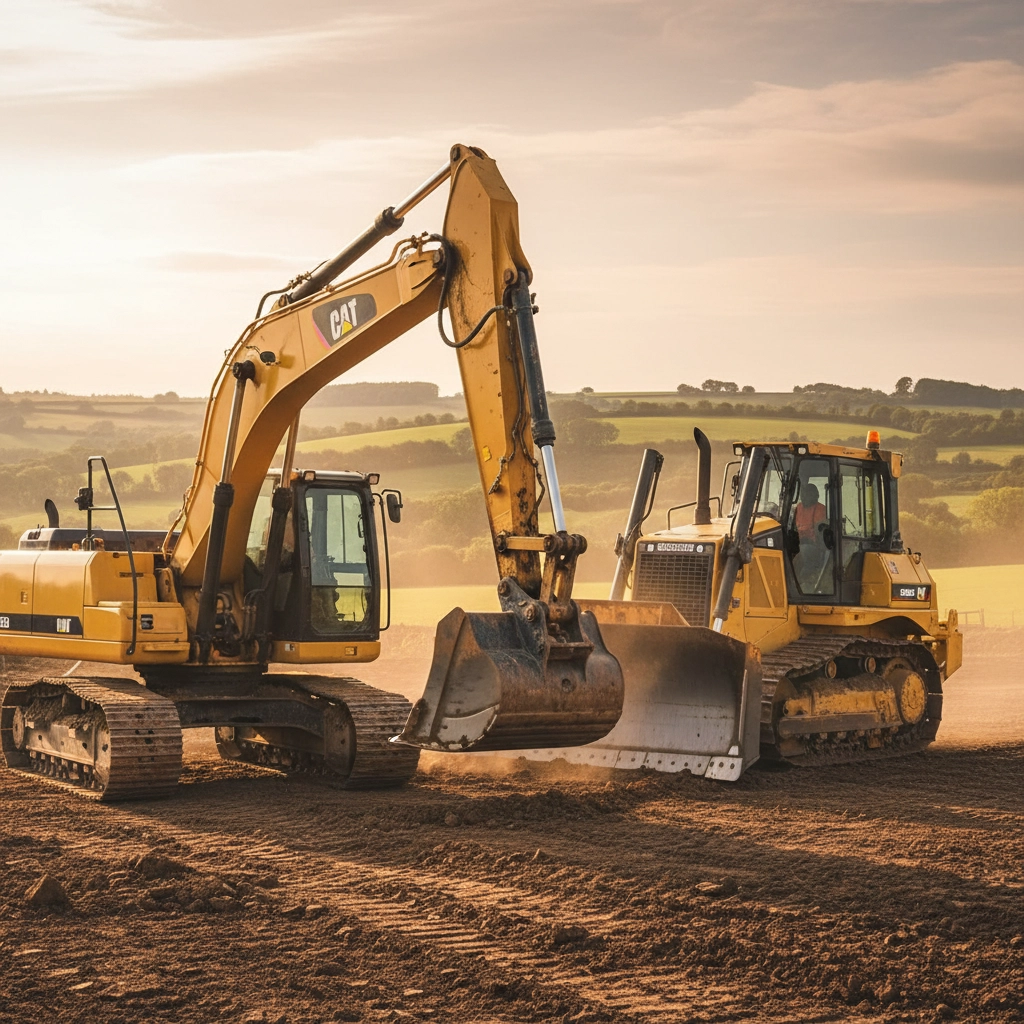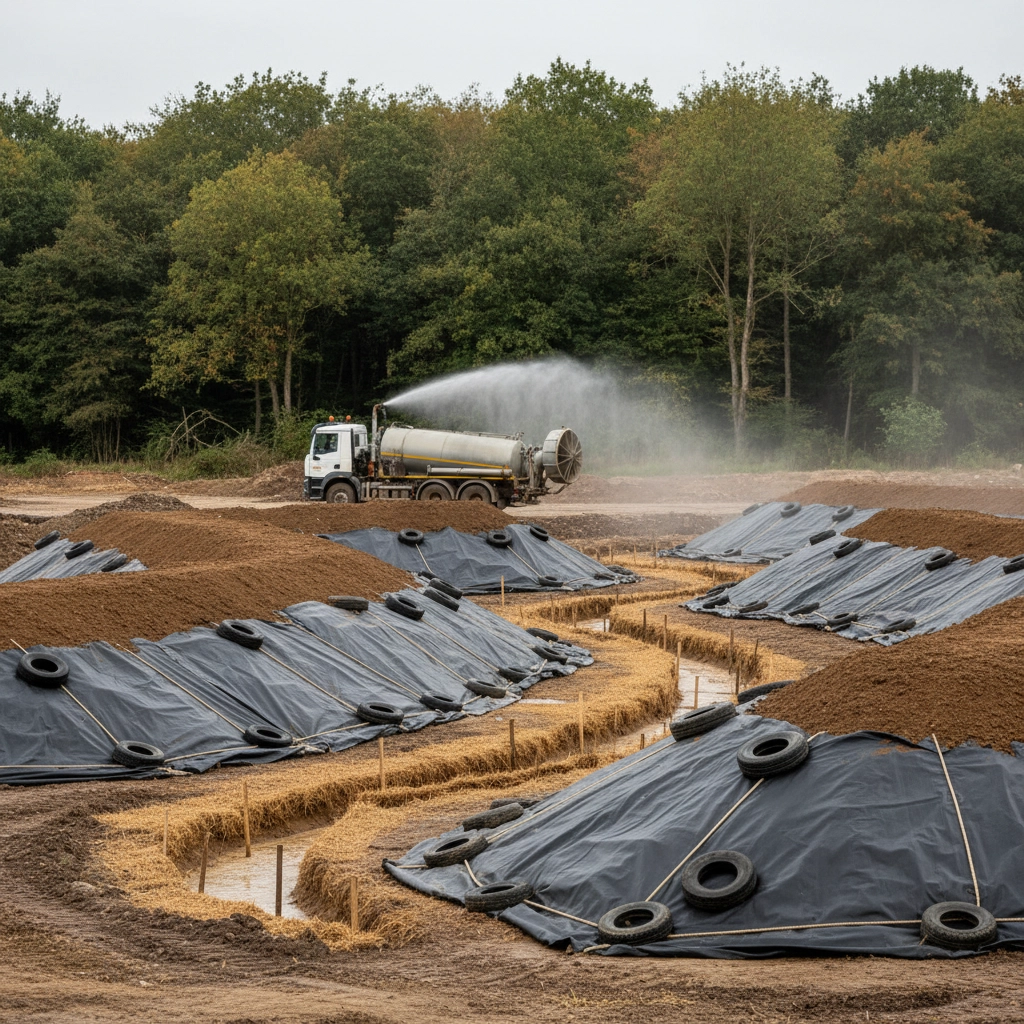A Simple Guide to Earthworks and Large Scale Soil Removal
- Penny Wales
- Oct 7
- 5 min read
Whether you're preparing a site for a new housing development, creating access roads, or landscaping a commercial property, earthworks and soil removal are fundamental to getting your project off the ground. For UK builders, groundworkers, and landscapers, understanding the ins and outs of large-scale earth moving can make the difference between a smooth project and costly delays.
Let's break down everything you need to know about planning, executing, and managing earthworks projects across the UK.
What Are Earthworks?
Earthworks involve the systematic movement, removal, and repositioning of soil, rock, and other ground materials to prepare sites for construction or development. This includes everything from basic excavation and leveling to complex cut-and-fill operations that reshape entire landscapes.
The process serves several critical purposes: creating stable foundations, managing water drainage, establishing proper site access, and ensuring compliance with building regulations. Whether you're working on a small residential extension or a major infrastructure project, proper earthworks set the stage for everything that follows.
Planning Your Earthworks Project

Site Survey and Assessment
Before any machinery hits the ground, thorough site analysis is essential. You'll need to understand soil composition, existing drainage patterns, underground utilities, and any environmental constraints. In the UK, this often means dealing with clay soils, checking for archaeological significance, and understanding local water table levels.
Get a proper topographical survey done: it'll save you headaches later when you're calculating cut and fill volumes. Know your soil types too, as different materials require different handling approaches. Clay needs different treatment than sandy soil or chalk.
Regulatory Requirements
UK earthworks projects must comply with several regulations. You'll likely need planning permission for significant soil removal, especially if you're changing site levels or affecting drainage. The Environment Agency may require permits for certain activities, particularly if you're working near watercourses.
Don't forget about the Construction (Design and Management) Regulations 2015. For larger projects, you'll need proper risk assessments, method statements, and potentially archaeological surveys before you start moving earth.
Volume Calculations
Getting your quantities right from the start prevents costly surprises. Calculate both cut volumes (soil to be removed) and fill requirements (areas needing soil). Factor in soil expansion: excavated material typically increases in volume by 15-25% depending on soil type.
Consider where your excess soil will go. Can it be used elsewhere on site, or do you need to arrange for removal? Similarly, if you need additional fill material, source it early to avoid project delays.
Choosing the Right Machinery

Excavators for Precision Work
Excavators are your workhorses for most earthwork operations. For large-scale projects, 20-30 tonne machines offer the best balance of power and efficiency. They're perfect for cutting into slopes, creating drainage trenches, and loading trucks for soil removal.
Consider tracked excavators for soft ground conditions: common in the UK: as they distribute weight better than wheeled machines. For projects requiring long reach or deep excavation, choose machines with extended arms.
Bulldozers for Moving Volume
When you need to push large amounts of material around site, bulldozers excel. They're particularly effective for spreading fill material and creating level platforms. Modern GPS-guided dozers can work to precise levels, reducing the need for constant surveying.
Dump Trucks and ADTs
For removing soil from site or bringing in fill material, your truck choice matters. Articulated dump trucks (ADTs) handle rough terrain better than rigid trucks, making them ideal for construction sites. Size your fleet based on haul distances and site access limitations.
Compaction Equipment
Don't underestimate the importance of proper compaction. Vibrating rollers work well for large areas, while plate compactors handle smaller spaces and around utilities. Different soil types require different compaction methods: clay soils need different treatment than granular materials.
Environmental Considerations and Regulations

Soil Management
The UK's Definition of Waste regulations affect how you handle excavated soil. Clean soil can often be reused on-site or moved to other projects without waste permits, but contaminated materials require special handling and disposal.
Strip and store topsoil separately: it's valuable material that shouldn't be mixed with subsoil. Create proper storage heaps with adequate drainage to prevent waterlogging and preserve soil structure.
Water Management
UK weather means dealing with water on most earthworks projects. Plan for drainage during construction: waterlogged excavations are dangerous and slow progress. Install temporary drainage systems early, and consider seasonal timing for major earth moving operations.
Be aware of groundwater levels and springs. Unexpected water can quickly turn an excavation into a pond, requiring expensive pumping and potentially affecting neighboring properties.
Noise and Dust Control
Local authorities often impose restrictions on working hours and noise levels. Plan noisy operations for appropriate times, and consider neighbors when scheduling work. Dust suppression may be required, particularly in dry conditions or urban areas.
Managing Large Scale Soil Removal
Logistics Coordination
Large projects require careful coordination of earthmoving activities. Schedule truck movements to avoid peak traffic hours where possible, and establish clear site access routes. Communication between machine operators, truck drivers, and site management prevents costly delays.
Consider the impact on local roads: large trucks can damage unsuitable surfaces, and you may be liable for repairs. Plan routes that minimize disruption and avoid weight restrictions.
Quality Control
Establish clear specifications for cut levels, fill placement, and compaction requirements. Regular testing ensures work meets engineering specifications and building standards. Don't wait until the end to check: correcting issues early costs far less than remedial work.
Health and Safety
Earthworks present significant hazards. Excavations can collapse, machinery can roll over on slopes, and underground utilities pose electrocution risks. Implement proper edge protection, establish exclusion zones, and ensure all operators are competent and certified.
Consider ground conditions when planning work sequences. Soft ground may not support heavy machinery, and steep slopes require special precautions.
How Aggregate Slutions Ltd Can Support Your Project
Managing soil removal and sourcing quality fill materials often challenges project timelines and budgets. That's where Aggregate Slutions Ltd steps in to streamline your earthworks operations.
Reliable Soil Removal Services
We handle large-scale soil removal with modern trucks and experienced drivers who understand UK construction sites. Our fleet can handle everything from small residential excavations to major civil engineering projects, with flexible scheduling to match your project timeline.
Quality Fill Materials
When you need fill material, we supply topsoil, building sand, and other aggregates sourced from reputable UK suppliers. Our materials come with appropriate certification and testing documentation to meet your project specifications.
Aggregate Supply and Delivery
From building sand for foundations to specialist materials like MOT for road construction, we maintain stocks of essential construction aggregates. Regular deliveries keep your project moving without material shortages.
Common Challenges and Solutions
Weather Delays
UK weather frequently disrupts earthworks. Build contingency time into your schedule, and have plans for protecting exposed surfaces during heavy rain. Consider seasonal timing: avoid major earthworks during wettest months where possible.
Unexpected Ground Conditions
Ground investigations don't always reveal every challenge. Budget for unexpected conditions like buried obstructions, contaminated soil, or varying ground water levels. Having flexible contracts with suppliers and contractors helps manage these situations.
Access Issues
Narrow site access or weight restrictions can limit machinery options and increase costs. Survey access routes early, including overhead restrictions for loaded trucks. Sometimes smaller machinery making more trips proves more economical than attempting to use larger equipment.
Getting earthworks right sets the foundation, literally: for successful construction projects. Proper planning, appropriate machinery selection, regulatory compliance, and reliable material suppliers combine to deliver projects on time and within budget. Whether you're tackling your first major earthworks project or managing your hundredth, these fundamentals remain constant.
Remember that earthworks expertise develops over time. Don't hesitate to consult with specialists for complex projects, and build relationships with reliable suppliers who understand UK construction demands. With proper planning and the right support, your earthworks operations can proceed smoothly regardless of project scale.
Comments